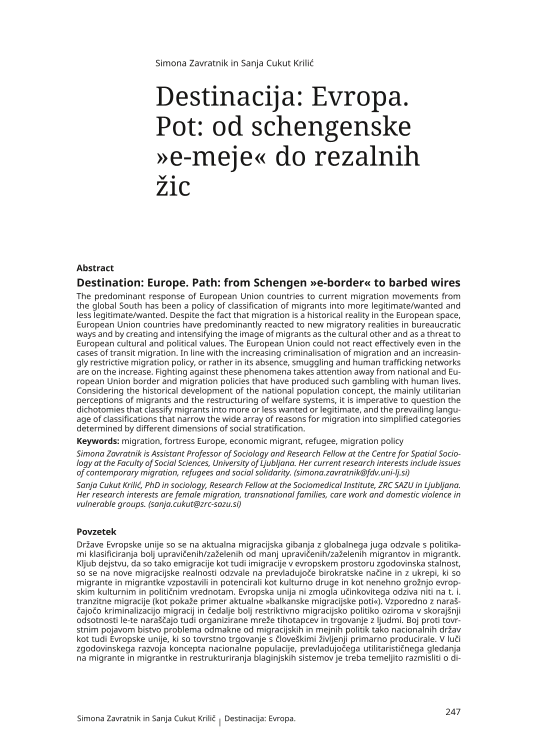The predominant response of European Union countries to current migration movements from the global South has been a policy of classification of migrants into more legitimate/wanted and less legitimate/wanted. Despite the fact that migration is a historical reality in the European space, European Union countries have predominantly reacted to new migratory realities in bureaucratic ways and by creating and intensifying the image of migrants as the cultural other and as a threat to European cultural and political values. The European Union could not react effectively even in the cases of transit migration. In line with the increasing criminalisation of migration and an increasingly restrictive migration policy, or rather in its absence, smuggling and human trafficking networks are on the increase. Fighting against these phenomena takes attention away from national and European Union border and migration policies that have produced such gambling with human lives. Considering the historical development of the national population concept, the mainly utilitarian perceptions of migrants and the restructuring of welfare systems, it is imperative to question the dichotomies that classify migrants into more or less wanted or legitimate, and the prevailing language of classifications that narrow the wide array of reasons for migration into simplified categories determined by different dimensions of social stratification.




